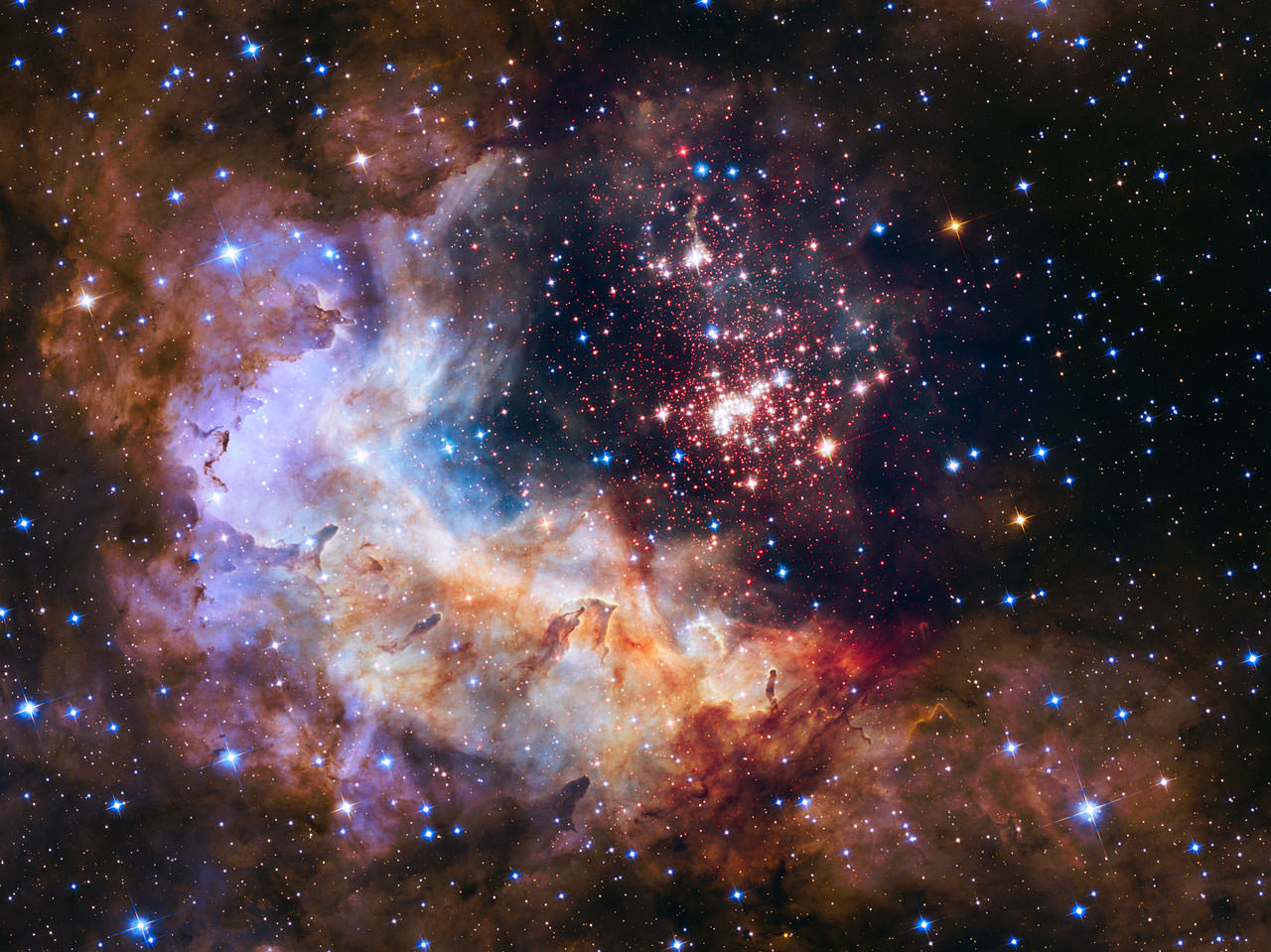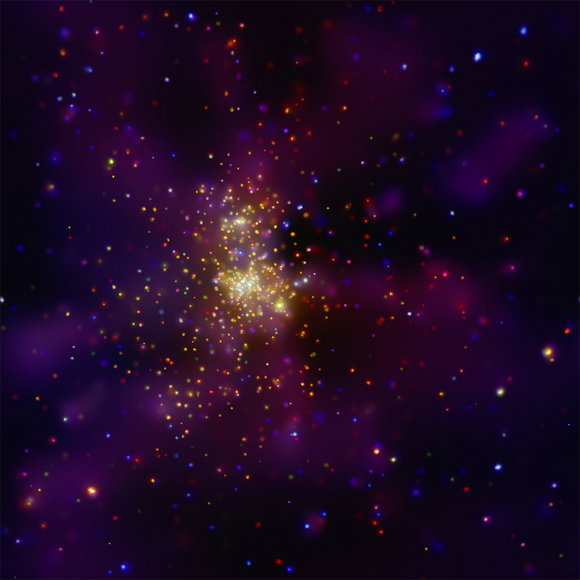Certain parts of the galaxy are more magical than others. There are barren wastelands where barely a particle strays through occasionally, and there are fantastical nebulae that can literally light up the sky. But beyond their good looks, those nebulae hold secrets to understanding some of the most important features of any galaxy – stars. Now, for the first time, a team from the University of Maryland managed to capture a high resolution image of one of the most active star-forming regions in our part of the galaxy. Data from that image are not only spectacular, but can illuminate the details of the star formation process.
Continue reading “One of the Brightest Star-Forming Regions in the Milky Way, Seen in Infrared”Hubble Telescope Celebrates 25 Years in Space With Spectacular New Image

Images from space don’t get any prettier than this. A new image from the Hubble Space Telescope was released today to commemorate a quarter century of exploring the Solar System and beyond since the launch of the telescope on April 24, 1990. It shows a giant cluster of about 3,000 stars called Westerlund 2, located 20,000 light-years away from Earth in the constellation Carina. NASA describes the new image as a “brilliant tapestry of young stars flaring to life resemble a glittering fireworks display.”
The Hubble Teams are giving away a few “gifts” to everyone to celebrate this silver anniversary — see below!
“Hubble has completely transformed our view of the universe, revealing the true beauty and richness of the cosmos” said John Grunsfeld, astronaut and associate administrator of NASA’s Science Mission Directorate. “This vista of starry fireworks and glowing gas is a fitting image for our celebration of 25 years of amazing Hubble science.”
The cluster is named after Swedish astronomer Bengt Westerlund who discovered the grouping in the 1960s.
You can get access to larger versions of the image here at ESA’s Hubble website, or at NASA’s HubbleSite.
There are anniversary events occurring around the US and the world. Here is a listing of at the Hubble anniversary site, where people can also find science articles, educational resources, downloadable presentations, and more:
And here’s a downloadable 25th anniversary gift for everyone: Hubble is offering a free ebook of 25 of Hubble’s most significant images, which can be found at this link or at iTunes.
See a stunning gallery of all the ‘anniversary’ images that have been released by the Hubble teams over the last 25 years at this Flickr gallery.
And finally, here’s an excellent visualization of a flight to the star cluster Westerlund 2:
New Chandra Image Is Eye Candy
This picture is too gorgeous not to share it. A new Chandra X-ray telescope image shows a beautiful, dense region of massive stars in the Centaurus constellation. It almost appears as though someone threw a handful of colored candies out into space. Known as Westerlund 2, this star cluster has been a mysterious region of our galaxy, filled with dust and gas that have obscured our vision of what lies inside. But new X-ray observations with Chandra have revealed some of the hottest, brightest and most massive known stars, and this is now regarded as one of the most interesting star clusters in the Milky Way galaxy.
About 20,000 light years from Earth, Westerlund 2 is a young star cluster with an estimated age of about one or two million years. An extremely massive double star system called WR20a is visible in the image, the bright yellow point just below and to the right of the cluster’s center. This system contains stars with whopping masses of 82 and 83 times that of the Sun. The dense streams of matter steadily ejected by these two massive stars, called stellar winds, collide with each other and produce large amounts of X-ray emissions. But alas, no chocolate candies.
This collision is seen at different angles as the stars orbit around each other every 3.7 days.
Several other bright X-ray sources may also show evidence for collisions between winds in massive binary systems.
The Chandra image of Westerlund 2 shows low energy X-rays in red, intermediate energy X-rays in green and high energy X-rays in blue. This is an area that is incredibly dense with massive stars, and bright with X-rays.
Image is 8.4 arc minutes across and was taken by the Chandra Advanced CCD Imaging Spectrometer, which can study temperature variations from x-ray sources.
Download this image for your desktop here.
Original News Source: Chandra Photo Album


